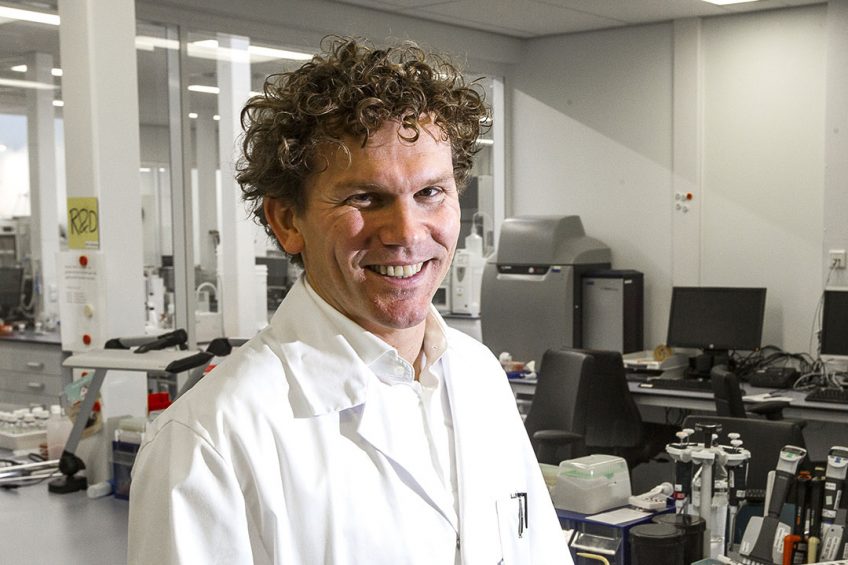“Every pig producer can limit consequences of PRRS”

More knowledge about PRRS virus should lead to a more targeted fight against that disease, which is difficult to beat. For that reason, researcher and virologist Jos Dortmans at GD Animal Health in the Netherlands will zoom in deeper into the virus.
Laboratory diagnostic services and animal health programmes are among the services which the Netherlands’ GD Animal Health is providing to industrial customers, governments, vets and farmers.
Recently, the organisation’s Dr Dortmans, aged 41, won € 25,000 for his research on Porcine Reproductive and Respiratory Syndrome (PRRS). The prize, awarded by pharmaceutical company Boehringer Ingelheim, will be used for improvement of the typing of different strains of PRRS. A correct identification of the virus will help producers to take the required steps against the disease.
Currently, to be able to say something about the background of the virus, often only 1 gene is taken into consideration, the ORF5-gene. Dr Dortmans and his colleagues will expand that to 6 genes in total of the PRRS virus.
Is this genotyping so important?
Dr Jos Dortmans: “Very important. Pig producers do ask a lot of questions about that. In case PRRS turns up at a farm, the producers would like to know e.g. whether it is a virus from the field or caused by a vaccine and whether or not the virus had already been within the farm – or perhaps had come from outside. In case the ORF5 gene of a PRRS virus we are researching will have a 98% resemblance with a strain that was found on that farm in an earlier stage, then there is a correlation, that we can say with quite some certainty. In that case, the advice will be to improve the internal hygiene to avoid the spread of PRRS. In case, however, the correlation is lower than 98%, then it is more likely to aim for external hygiene, to reduce the risk of getting the virus on-farm.”
Why do you choose to focus deeper on the virus only now?
“For the simple reason that it is still too costly to do it as a standard procedure. We now look at 1 gene, but in a few years that will most likely be expanded to 6 genes. With these 6 genes we will map about 20% of the virus. Those insights will offer us tools to figure out how reliable the ORF5 method is.”

Read more about pig health in the Pig Progress Health Tool
Perhaps the virus has often fooled the swine business. What do you think?
“Difficult to say. To figure that out, research is needed. More research will give more information. Technology is improving, luckily, and costs will come down. The research that we are about to do will show whether or not it makes sense to research a larger part of the virus. We will know next year. We do know, however, that the ORF5 gene we are researching is very variable and is mutating easily. In addition, from 2 PRRS variants a novel variant can come into existence. That is what makes the fight against PRRS extra difficult.”
Many pig farmers seem to think that it doesn’t make much sense to fight the virus on your own farm when the neighbours have PRRS problems as well. Is that thought a correct one?
“Not at all. Correct measures to avoid the introduction and spread of PRRS on-farm will improve the health status on any farm. Every pig producer can limit the consequences of PRRS for his or her farm. The research we are about to start will provide insights that will help the sector take a step further.”











